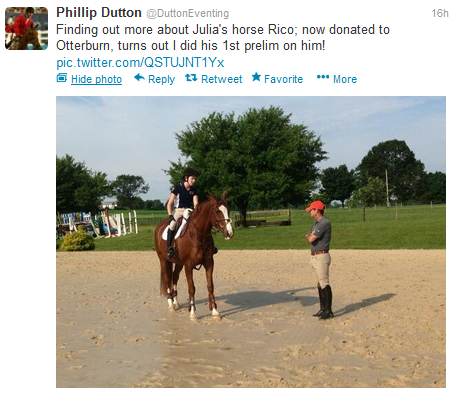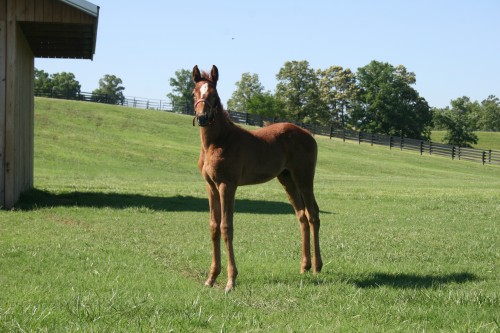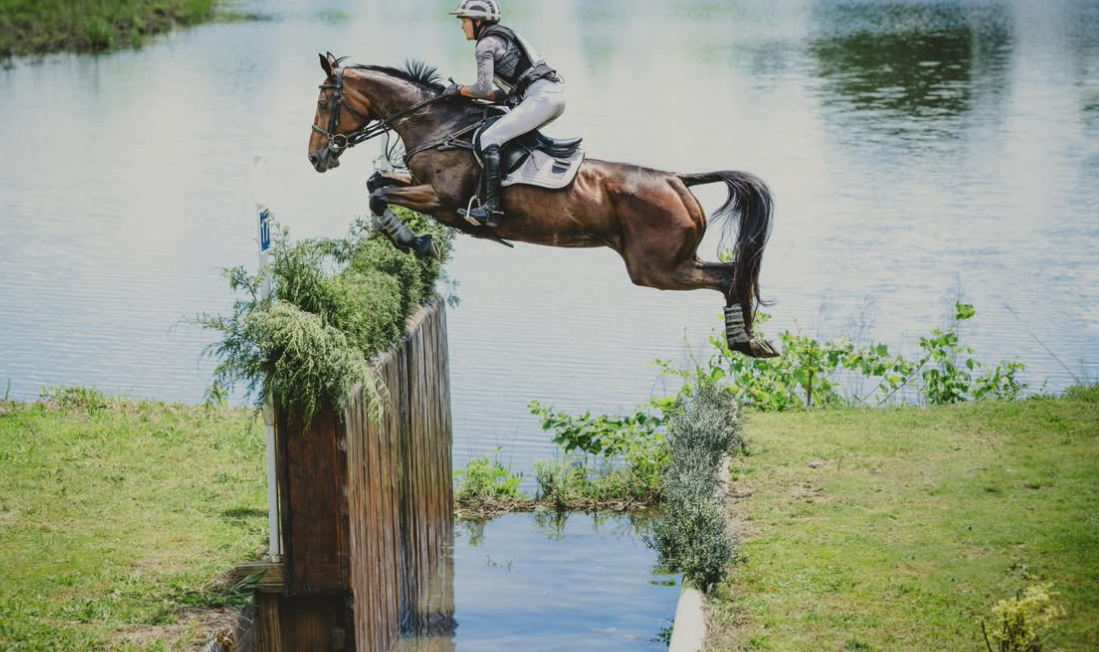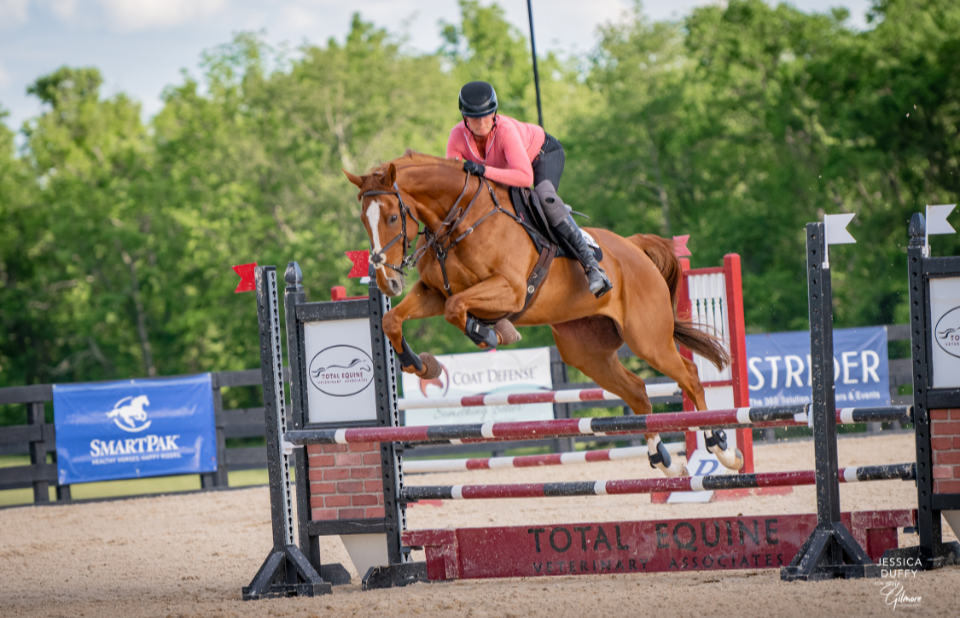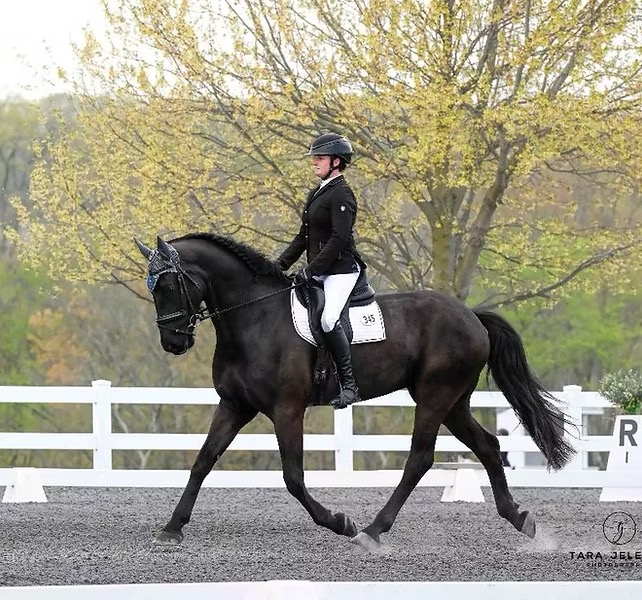
Skybreaker doing what he was born to do-at Tamarack Hill Farm. Photo credit to Flatlandsfoto
A straight, straight flush, full house and a royal flush are all poker terms that hold little value in my world. I can see the allure and intrigue behind a card game such as poker, and I can also understand the appeal, or addiction rather, that’s associated with gambling. Gambling is a slippery slope; those who mildly follow the game will likely come out on the bottom, and those individuals who really understand how the game’s played will have a better chance at winning, though there’s never a guarantee that you will come out on top. I’m guessing those genius players who know how to count cards and understand probability have the greatest chance at succeeding in the volatile world of cards.
I think the same can be said about horse breeds and breeding in general. In fact, breeding has become so refined and so specific that you can actually breed this mare to this stallion and you are very likely to get this type of horse. I am not an expert in horse breeds, or breeding for that matter, but I am starting to have a decent idea about what could make for a really nice event horse.
Eventing now is not what eventing used to be. Arguably, we can all accept this fact, regardless of whether or not you like this fact. If we can accept the fact that the long format has essentially vanished, and a “three day” event now is comprised of three phases only, then we can agree that a “new” type of horse is emerging. Arguably, the long format events were ideal for thoroughbreds, because what other breeds could do roads and tracks, steeplechase, dressage, show jumping, cross country and still have energy that last day? Of course other breeds besides thoroughbreds did long formats and did well, but a vast majority were TB’s, or had TB in them.
Times have changed and so has this sport. Let’s by perfectly honest, if you have a decent mover that is also very brave and goes around jumping everything he is pointed at, but you are up against a spectacular mover who also jumps around clean, then the fancy mover is most likely going to win. So much of eventing NOW revolves around dressage. Riders are actually getting scores of 19 in dressage. How can you beat a 19 in dressage? Or how can you beat a 19 in dressage when that horse goes and also jumps around clean? Of course this game is not solely based upon dressage, there are numerous other factors, one of which revolves around breeding.
Let’s look at two very different horses here at Tamarack Hill Farm that were chosen because of their pedigrees. Both are currently going novice, both are very good jumpers and both seem to have potential to go far in eventing. Let’s start with this adorable little mare that my buddy Daryl Kinney competes, Cabin Society, or better known as “Jumbie.”

Daryl and Jumbie rockin it over this large oxer!
Jumbie is a 6 year old mare who is by Jumbo, the leading British-based eventing sire today. Jumbo has been a top producer of eventers, dressage horses and top show jumper. Not to mention he is the sire of Headley Britannia, an unbelievable mare that won the 2006 Burghley Horse Trials, a win at the 2007 Badminton Horse Trials, and a win at the 2009 Rolex Kentucky Three Day. This cutie pie mare Jumbie was really purchased because of her breeding. She is only going novice right now but is demonstrating serious potential. She’s nice on the flat, has a very low key personality and a powerful and scopey jump! Will she go advanced? We don’t know-but her breeding suggests she could go very far.
Next we have a big hunk of a gelding, Beaulieu’s Cool Skybreaker, better known as “Skybreaker.” I am currently competing this big dude and we have high hopes for him as well.

Skybreaker Ho He Hum through a gymnastics line-last oxer around 4'3"!
Skybreaker is an 8 year old gelding by Beaulieu’s Coolman, who is by Quidam De Revel, the most distinguished and most expensive living sire of jumping horses. Skybreaker is out of a Heartbreaker mare so he has double powerhouse jumper lines! Heartbreaker is sired by the world famous Nimmerdor and as a six year old Heartbreaker was 5th at the World Championship for young horses at Lanaken. The following year he was 4th at Lanaken in the World Championships. Skybreaker had a slow start but is showing tremendous ability and ease over large fences. He is very fancy on the flat but has such an enormous body that he has taken this long to grow into his large feet…and believe me-they are huge plates he’s got. He is only going novice, but we will see how far he can go.
Both horses have their weaknesses and their strengths. Both horses are relatively young and green in eventing but have very interesting pedigrees. Denny is extremely interested in bloodlines and constantly quizzes Daryl and me. He knows that eventing has changed and that breeding a horse for modern day eventing can be very tricky. Eventing now seems to require a very specific type of a horse: one that can clean up on the flat, one that is scopey and can leave the rails up in show jumping, and on xc the horse not only needs to be able to gallop, but needs to be incredibly brave and quick over these tough questions that course designers are having us do now.
Do you agree or disagree that pedigree’s have so much to do with your horse’s innate ability? Do you know your horse’s bloodlines like the back of your hand? Do you care about bloodlines? Of course there are horses whose breed we don’t even know. There are “mutts” that make fabulous event horses and we see this all the time…like Theodore O’Connor, the super pony that rode around Rolex. But we also know that this sport has and is changing right in front of our eyes. We know what horses have done really well and we know what horses are currently doing really well. If we understand the way the game works, then why not pick and choose horses that we believe have a chance at succeeding? Do either of the two horses mentioned earlier stand a chance at Rolex? I have no clue, but knowing their pedigree’s and understanding what produced these two types of horses certainly helps when attempting to predict their futures.
This is not an anti-thoroughbred, and pro-warmblood discussion. Nor is it the reverse—pro-thoroughbred and anti-warmblood. Really, I’m interested in how this sport has changed and how specific the horse needs to be in order to go advanced, and actually do well at this level. Maybe this game is all about experimentation and trying out different breeds in order to see how they fit in this sport. Or, maybe eventing is like playing cards; if you understand how the game is played and what tools, skills, or knowledge you need in order to win, then perhaps you will succeed.































